Today’s customer journeys can be quite complex – there are so many more ways for brands to engage and interact with their customers, which leads to rapidly evolving customer expectations and a need for enhanced and distinctive customer experiences.
Why Map Your Customers’ Journey?
Gartner defines customer experience (CX) as “the customer’s perceptions and related feelings caused by the one-off and cumulative effect of interactions with a supplier’s employees, systems, channels, or product”.
That’s a mouthful… but it has a very simple translation in the real world. As Mark Cuban put it, “It is so much easier to be nice, to be respectful, to put yourself in your customers’ shoes and try to understand how you might help them before they ask for help, than it is to try to mend a broken customer relationship.” Customer journeys help businesses to be nicer, more respectful, and more empathetic.
How do you put yourself in your customer’s shoes? Herein lies the value of the customer journey map, a fundamental tool for developing your CX strategy.
The journey map brings to life all of the touchpoints a customer has within an end-to-end experience. It is not focused on internal processes, rather the customer’s point-of-view – depicting not only what that customer is doing and saying throughout their journey, but also the emotional context (what they are thinking and feeling) by engaging with that experience. Ultimately, a journey map is a visual representation that communicates the customer experience – what your customers are doing, thinking, and feeling – every step of the way.
The Journey Mapping Process
The path to best journey maps starts with two questions: “Who’s journey?” and “How do they engage?” The answers to these questions lead us to define our targets and the specific journeys we need to understand.
We often start with a working session among core business team members who are interested in the journey. It is in these sessions where we begin to hypothesize what the journey looks like from the customer’s point of view, which will refine our learning approach.
Then we speak directly with the customers. As we collaborate, we not only confirm and adjust our hypotheses, but also uncover any workarounds, define steps of the journey that are important and/or painful, and capture how customers feel as they go through this journey. These collaborative sessions – or summits as we like to call them – can last 2-3 hours and should be extremely interactive and fun to ensure engagement and focus throughout.
Armed with what the customer is doing, thinking, and feeling – the focus shifts to creating the actual map(s). This process does not happen in a vacuum, as it is immensely important for the core team to collaborate and engage in mapmaking – ensuring everyone is comfortable with both the look and feel of the map, as well as the actual content that is included. Successful journey maps must be easy to understand, actionable, and empowering throughout the organization.
Customer journey mapping will help you to define – and redefine – how your customers experience your product or service by channel, ultimately helping you to make smarter business decisions.
We are passionate about journey mapping! Contact bstonge@ksrinc.com to hear more about how we can help you better understand your customers and their experiences.


